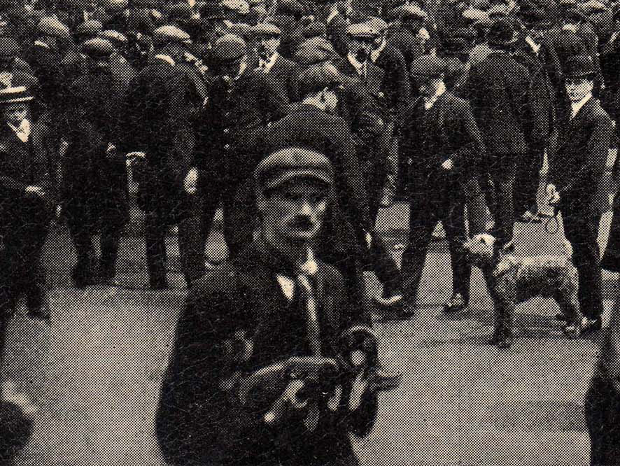The history of Club Row live animal market
Choosing a dog is no easy task. The cuteness of a terrier, or the leanness of a whippet? The stature of a labrador or the Englishness of a bulldog?
In most cases the pet shop owner will run you through the pros and cons, the pedigree and the breed. But at the Club Row Animal Market – just north of Bethnal Green Road – you would have simply been fed what you wanted to hear.
Kaye Webb provides a vivid account of the trading techniques in her 1953 book Looking at London and People Worth Meeting.
“ ‘Hi, mate, buy a dog to keep you warm!’ said the man with the Chows to a pair of shivering Lascar seamen. ‘E’s worth double, lady, but I want ‘im to ‘ave a good ‘ome’ or ‘Here’s a good dog, born between the sheets, got his pedigree in my pocket!’ ‘Who’d care for a German sausage? – stretch him to make up the rations,’ the salesman with the dachshund said.”
Club Row Market was London’s one and only live animal market. Dogs, cats, birds, chickens, snakes, gerbils, guinea pigs – even monkeys and lion cubs could be found there. Imagine that – lion cubs for sale on the streets of Shoreditch.
From its humble beginnings as a place where farmers could trade outside the city walls, Club Row market spread down Sclater Street and initially developed into a bird market. This was a legacy of the French Huguenots who immigrated to the area after the Revocation of the Edict of Nantes in 1685 and had the custom of keeping canaries and various singing birds.
Writing in the early 20th Century, George R. Sims described the market as follows: “On Sunday nothing but bird-cages are to be seen from roofs to pavement in almost every house. At first you see nothing but the avenue of bird-cages. The crowd in the narrow street is so dense that you can gather no idea of what is in the shop-windows or what the mob of men crowding together in black patches of humanity are dealing in.”
And the market wasn’t restricted to the street either. “It was an extraordinary sight, this marvellous old pub full of stacked up cages of exotic screeching birds” comments Derek Brown on the Spitalfields Life blog. The pub in question was the Knave of Clubs – now an upmarket restaurant called Les Trois Garçons where the “wildlife is taxidermy”.
As time progressed dogs and other animals were eventually sold alongside the caged birds. By the 1960s “a cacophony of whimpers, yaps, yelps, and just plain barking guides you to the spot where Bethnal Green Road branches off to Sclater Street,” Webb writes.
The RSPCA and other animal rights groups eventually succeeded in shutting the market down, and judging by most accounts this was fully justified. There is no shortage of stories about boot polish being used to mask sores and entire litters of puppies sold for medical research.
Far from defending the traders or seeking to rationalise animal cruelty, there is – however – no denying that the market must have been quite a sight: a street theatre for East End traders which knew no limits.
Street trading is still alive and well in the streets of Spitalfields with Club Row’s animals making way for Brick Lane’s antiques and toiletries, bikes and records. Virtually everything imaginable is on offer now – except animals that is.
When the government introduced a law in 1983 outlawing the street sale of live animals, centuries of East End tradition were brought to a close. London lost its only live animal market, and is unlikely to ever see another one.
A stroll down Club Row and Sclater Street today is a very different experience to what it was just twenty years ago. Former bomb sites where the market used to spread have now been developed and Shoreditch’s first skyscraper now reigns supreme. As for dogs – well, why keep a dog in Shoreditch anyway?

